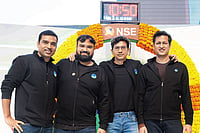Open Network for Digital Commerce (ONDC) has been increasing its focus on making technology accessible with the help of it's zero commission model, said T. Koshy, MD & CEO of ONDC. The platform recently launched a white paper titled Driving Digital Inclusion: Open Networks and Zero-Commission Mobility Apps.
Speaking at the launch of the white paper, Koshy said that mobility is not something that they are looking at as a separate category. “However, we do expect this segment to grow gradually, with more apps entering as we move forward. We are continuously looking at domains with significant impact and adding more as needed,” added Koshy.
Just to give some context, a zero commission model doesn't charge a commission per ride. Instead, a one-time subscription fee is applicable. Generally, a commission of around 20-30 per cent is charged by cab aggregators.
The white paper indicates that this model has the ability to boost drivers’ incomes by up to 30 per cent. This will be done by adding Rs 1.36 lakh per driver annually, which totals Rs 20,475 crore for 15 lakh drivers.
“Rather than aggregators, we mostly have a subscription-based model. This indicates that the portion of the fare is not taken for every ride, unlike a commission-based model. How it works out at a unit economy level becomes significant. From around Rs 37,000, the monthly income would be Rs 48,000, which is something that we have seen with these models for the drivers. This in turn will help drive local consumption and in turn the economy”, said Devendra Damle, Vice President of Policy, at the session.
This in turn will have an annual impact, and the tax collection that will be added because of this additional income will increase, added Damle.
In terms of efforts that the government can take to promote this model, it includes rationalization of the GST framework.
“The GST clarification is crucial because businesses in e-commerce and SaaS models often face uncertainty around taxation. There have been some challenges, especially for small businesses complying with GST,” said Koshy.
These clarifications are important as the sector evolves, especially as new models like open networks emerge. Policies need to adapt to these structural changes to ensure smoother transitions, added Koshy.
Government-backed ONDC reported 4.74 million transactions in the mobility segment in August this year. While the transactions in the non-mobility segments were 7.84 million, including retail purchases and logistics for order deliveries. Speaking about the increase in retail transactions, Koshy mentioned that growth in both areas is positive for everyone. “Retail, in particular, is gaining traction across diverse segments like groceries, food, fashion, and electronics. Many new players are joining, and each is adapting to the network,” he added. The open networking platform claims to have made significant progress, with over 20 apps already processing more than 1,000 transactions daily.































